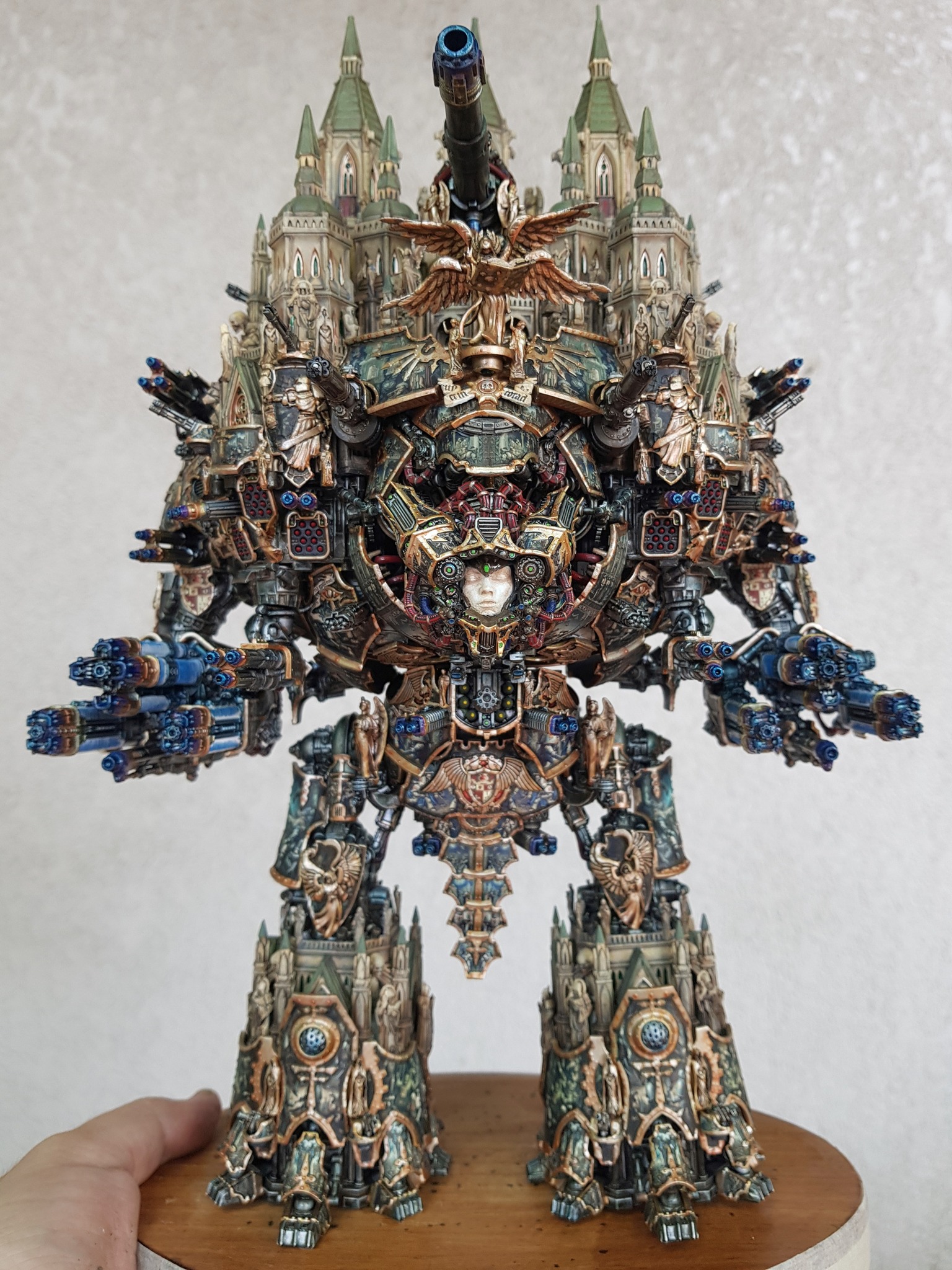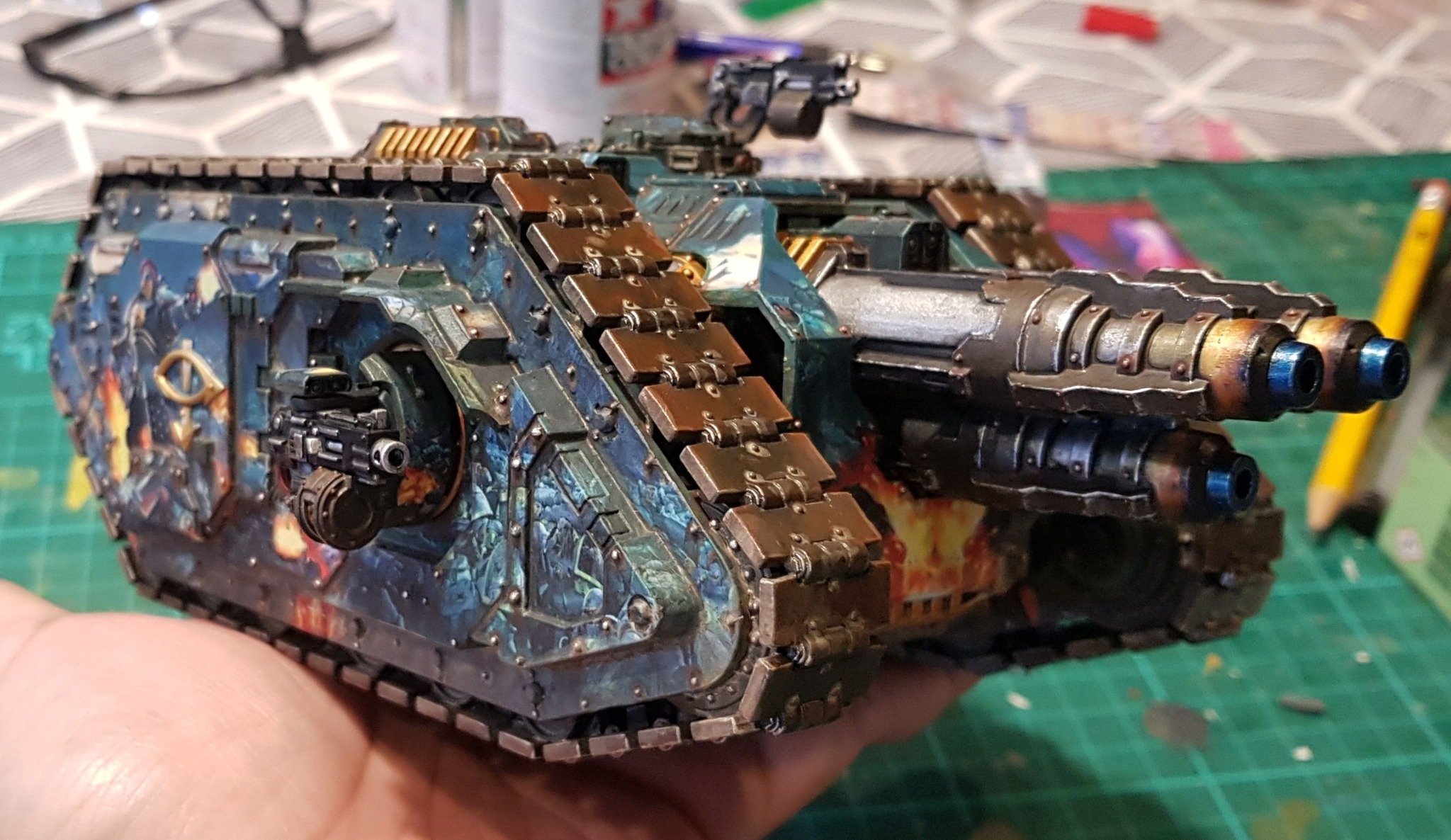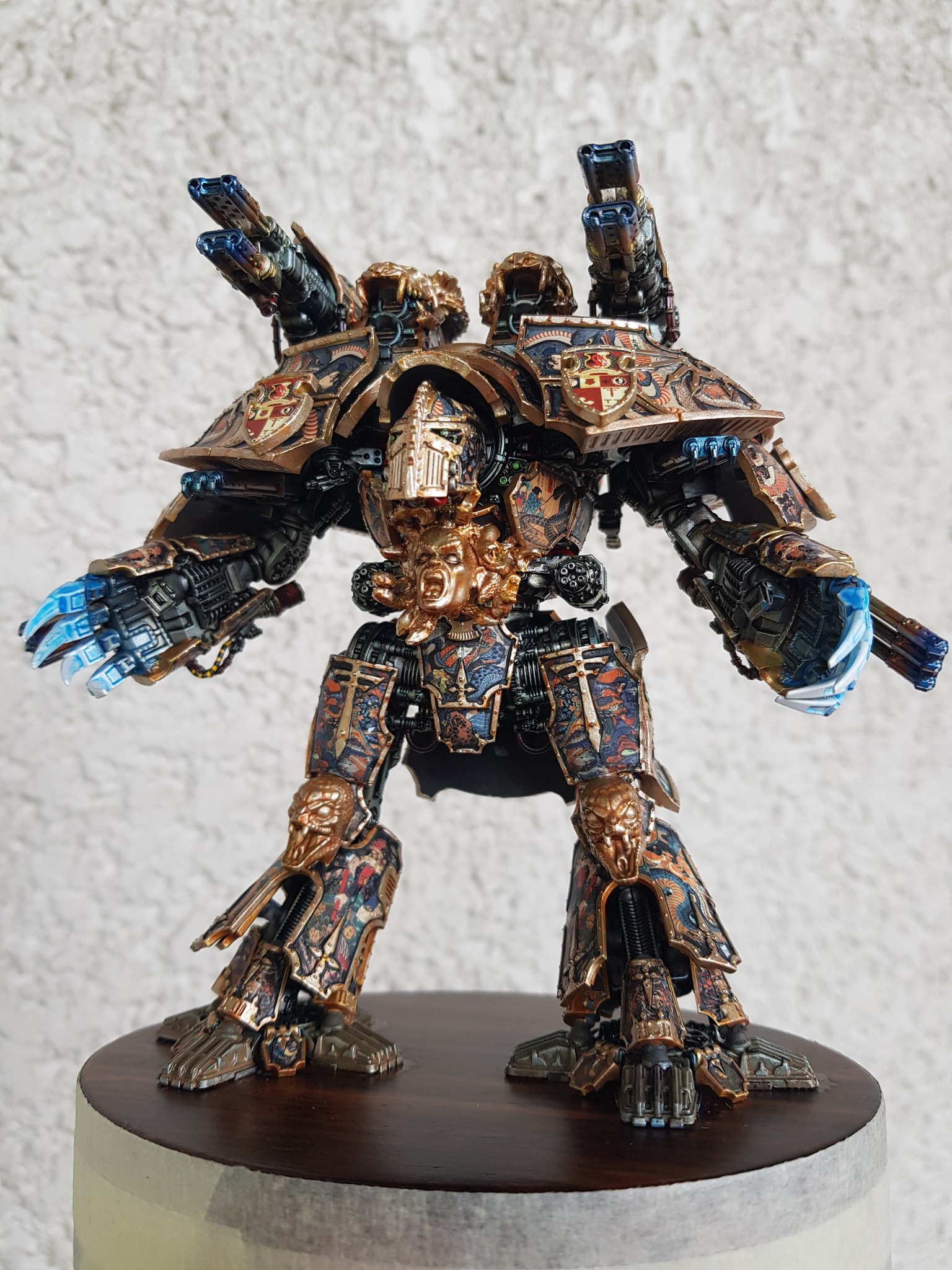
Odessa’s Wrath: The Colossal Cathedral of War
Colossal Cathedral of War
This magnificent model, named Odessa’s Wrath, is an awe-inspiring rendition of an Imperator Titan, one of the largest and most sacred war engines in the Warhammer 40,000 universe. Painted by Jano Eustaquio, the model seamlessly fuses Gothic architecture with apocalyptic firepower. The upper carapace resembles a soaring Imperial cathedral, complete with green-roofed towers, spires, stained-glass-style details, and golden statues that embody the Ecclesiarchy’s divine presence. Dominating the chest is a striking mechanical faceplate, crowned with a halo-like helm of gears, scrolls, and lenses. The entire build exudes a sense of divine wrath made metal, towering as a literal embodiment of the Emperor’s will. The meticulous detailing, from the weathered bronze to the shimmering blue weapon cores, reflects hundreds of hours of painting mastery.
Weapons of Divine Judgement
The Imperator Titan’s armament is no less holy than its appearance, outfitted here with twin plasma annihilators and missile pods bristling from its cathedral-laced shoulders. Each arm is an altar of devastation, painted with glowing coils and vengeful fury, signifying its ability to level armies and cities alike. Jano’s color choice emphasizes contrast—deep metallic blues on the plasma weapons and rich bronze with green patina throughout the structure give it a sacred-yet-brutal feel. Ornate aquilas and Imperial iconography are present at nearly every joint and corner, reinforcing the Titan’s role as both fortress and shrine. What sets this piece apart is how much of the Imperium’s dogma is embedded into every inch, turning it into a walking relic. The placement of human-like statues and gothic friezes across the hull gives the model a sense of reverent age.
The Lore of the Imperator Titan
In the lore, the Imperator Titan is the pinnacle of the Adeptus Mechanicus’ god-machines, a walking mountain of adamantium and devotion. Towering far above even Warlord Titans, the Imperator is both fortress and weapon, carrying entire chapels, command centers, and barracks upon its shoulders. These divine machines are rarely seen outside of the most critical campaigns due to their immense size and rarity. Each one is considered a relic of immense power, a treasure of the Mechanicum and the Imperium, often built into the very dogma of the Ecclesiarchy. They are worshipped by their crews and surrounding forces alike, often mistaken for gods by the uninitiated. Their presence alone can turn the tide of planetary invasion or defense.
Divine Wrath Given Form
Jano Eustaquio’s interpretation of Odessa’s Wrath captures that epic scale and reverence beautifully. The front-facing faceplate, with its stern, almost mournful expression, speaks to the human soul bound to the machine’s purpose—perhaps a Princeps encased in a sarcophagus or a machine spirit shaped by millennia of war. The base of the legs continues the cathedral theme, with stone-like buttresses and heraldic shields giving the impression that this Titan has walked straight out of a holy fortress. The back-mounted cannon adds even more gravitas, aimed at the heavens, ready to smite the Emperor’s foes. Odessa’s Wrath isn’t just a Titan—it’s a moving monument, a war-temple, and an act of devotion cast in ceramite and adamantium. This miniature not only tells a story of cataclysmic battle but also of faith and divine vengeance walking among mortals. It’s one of those rare pieces where the painter and the lore merge into a single, harmonious masterpiece.



